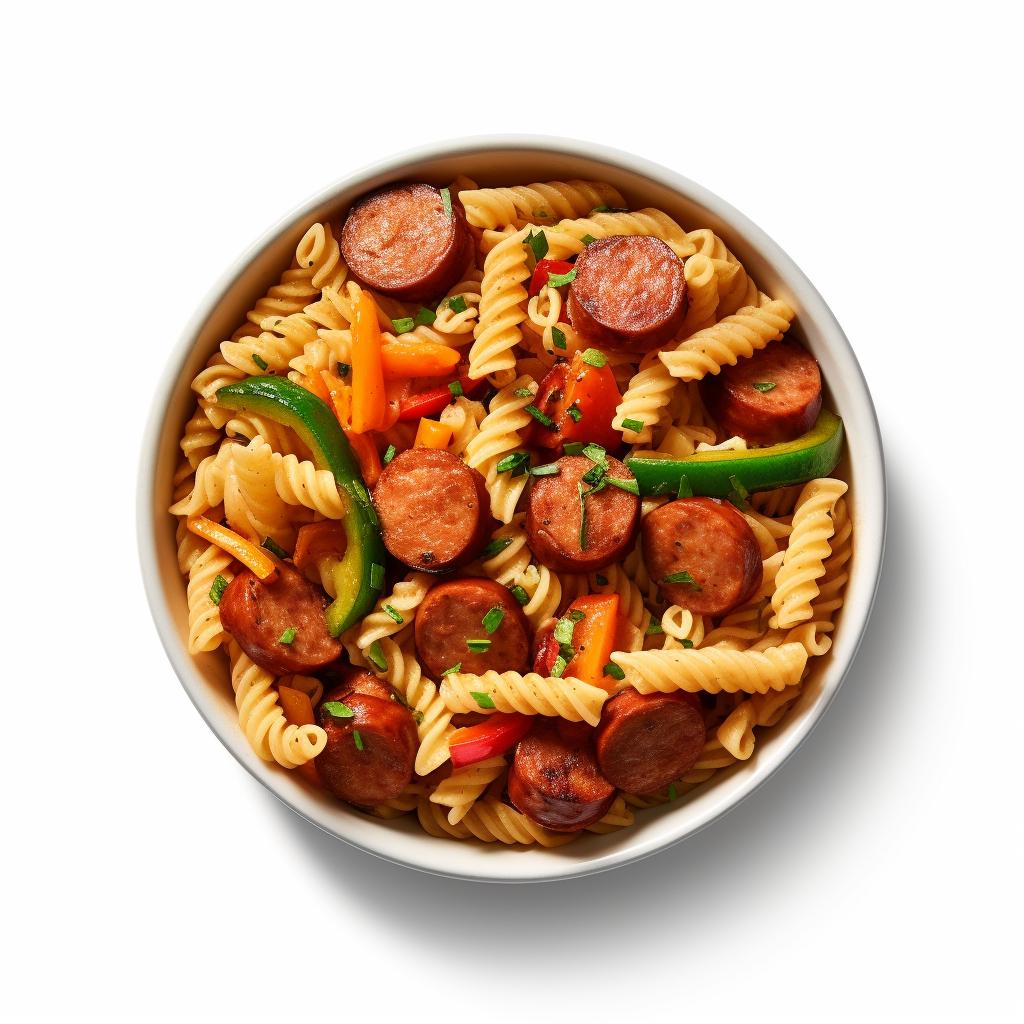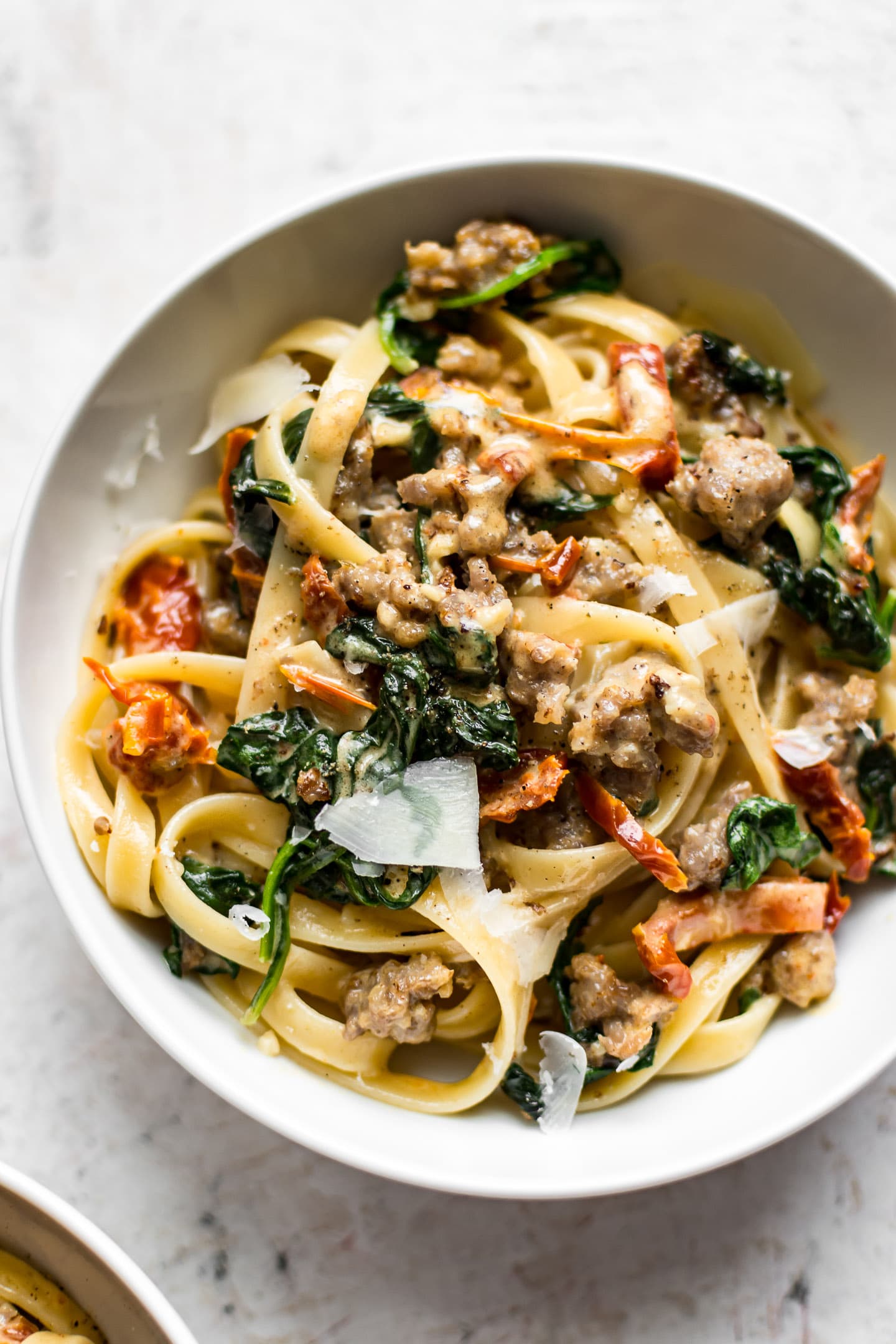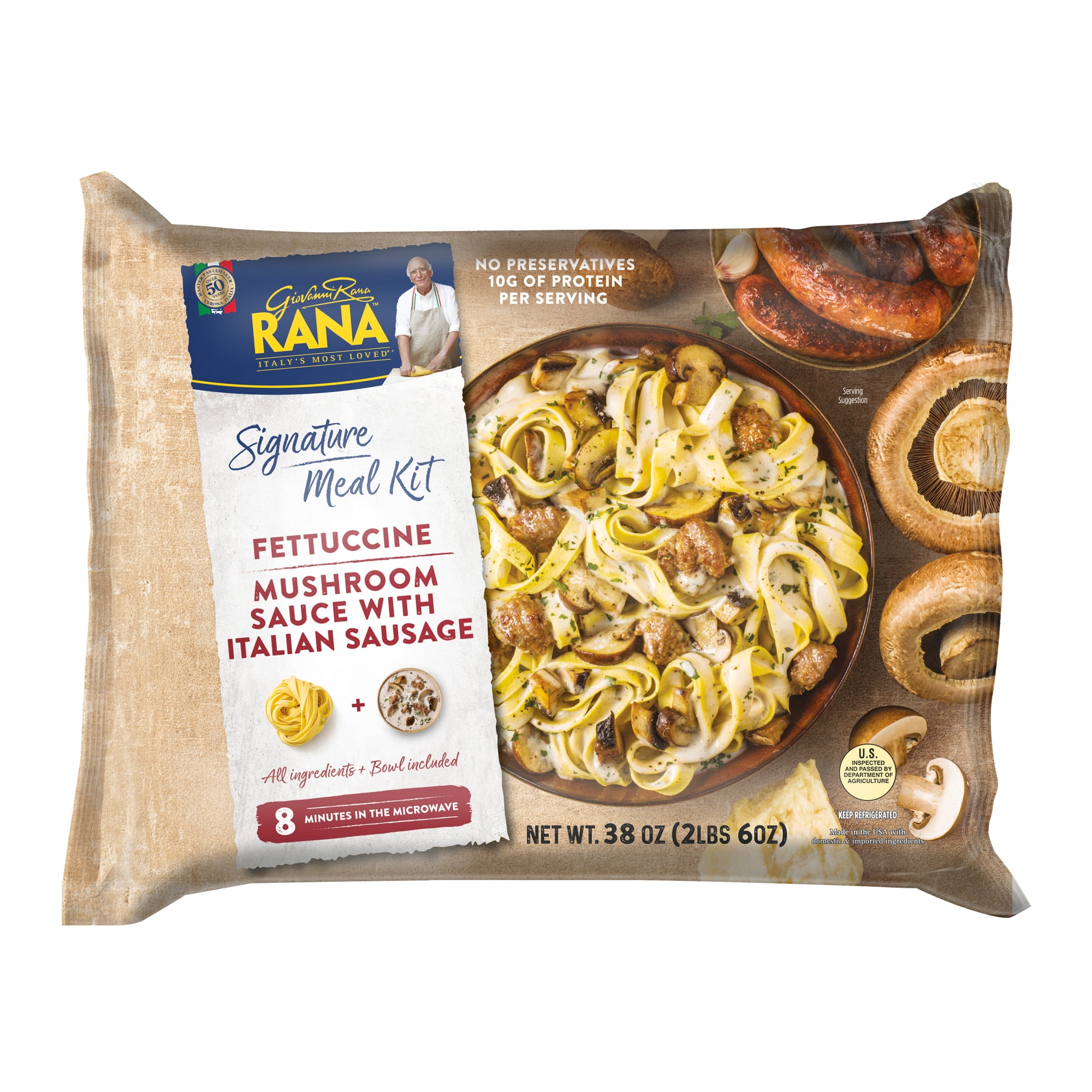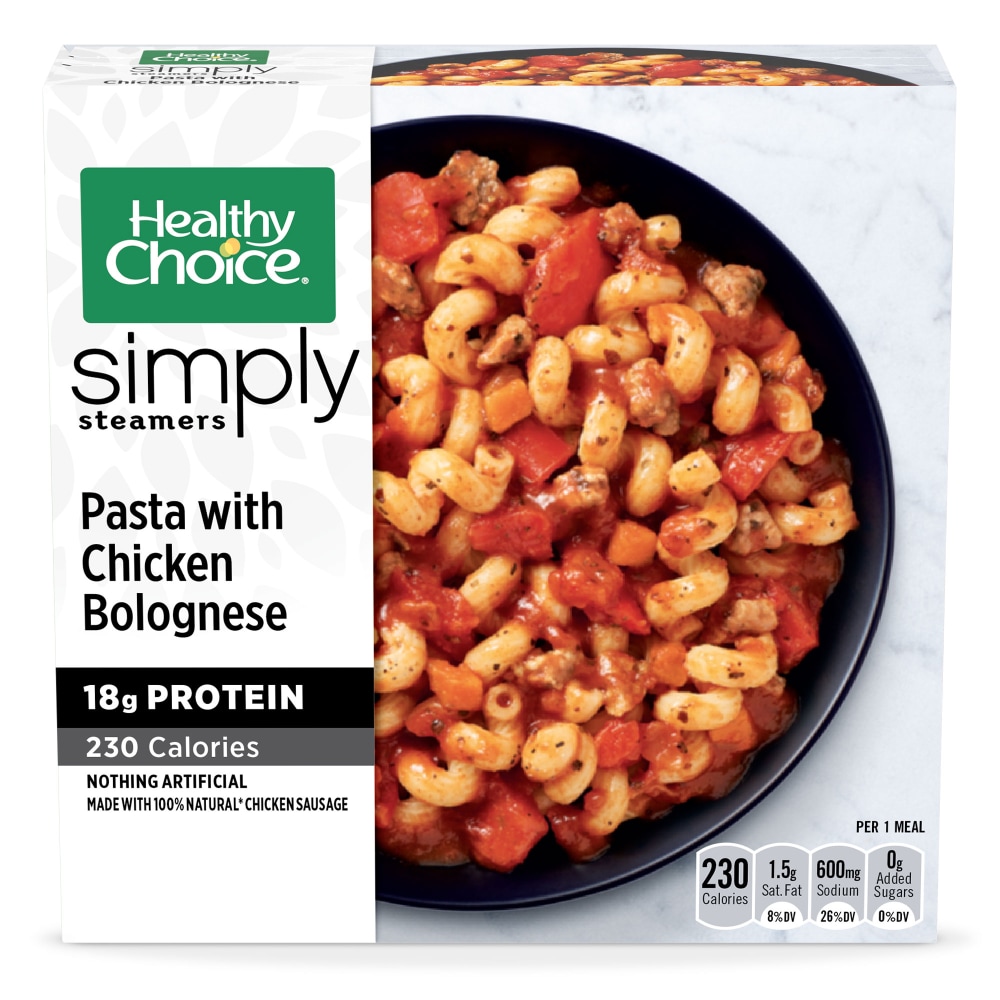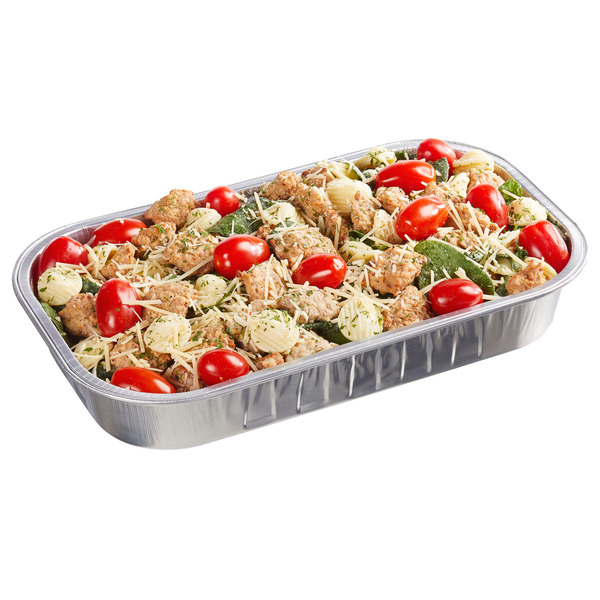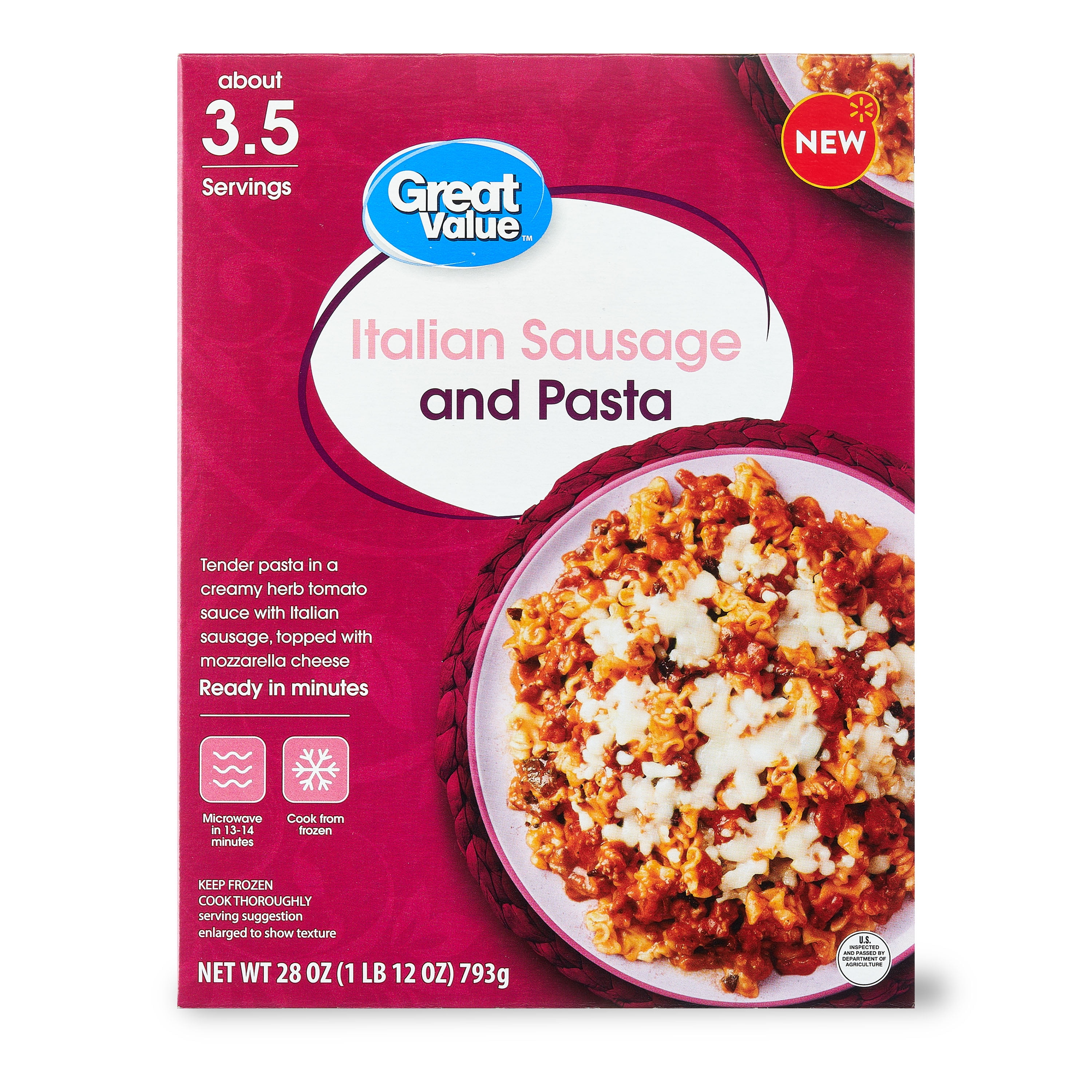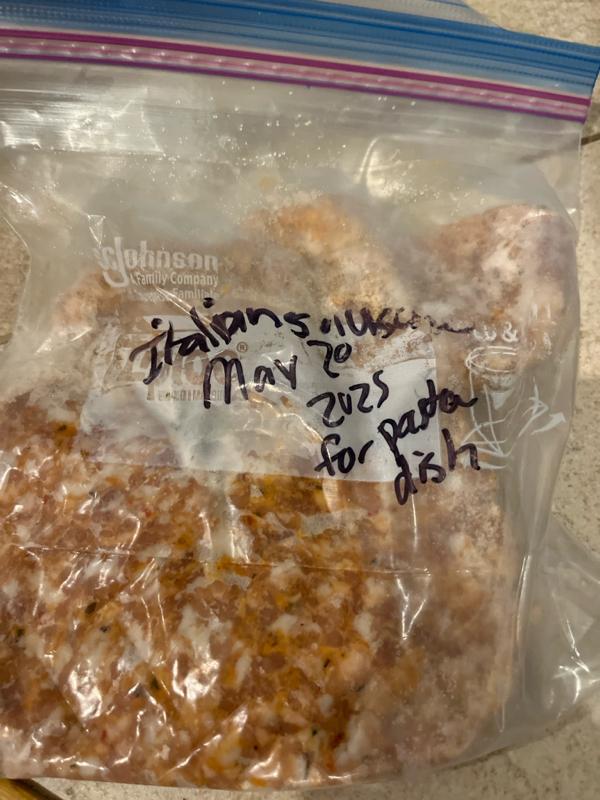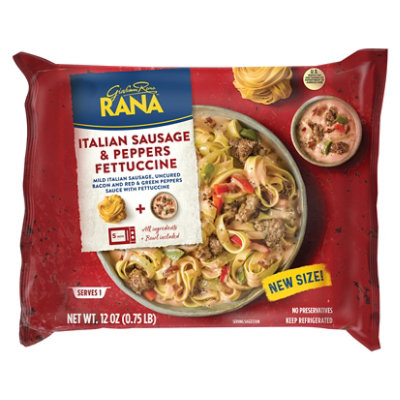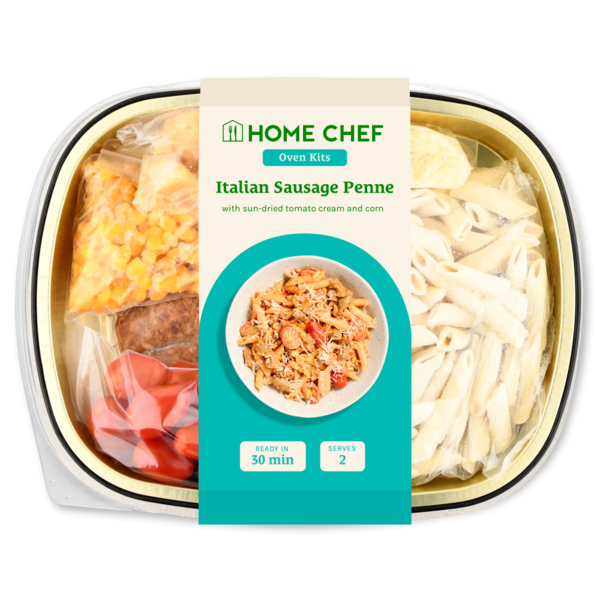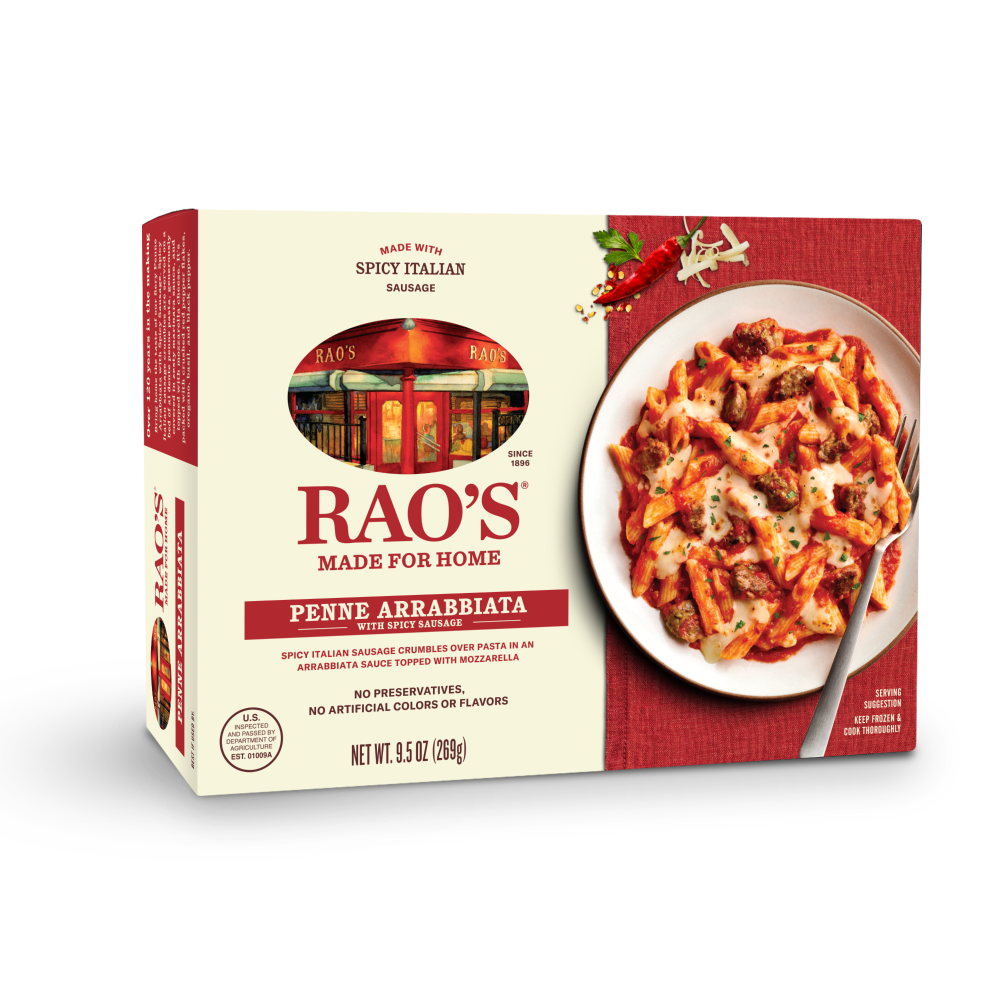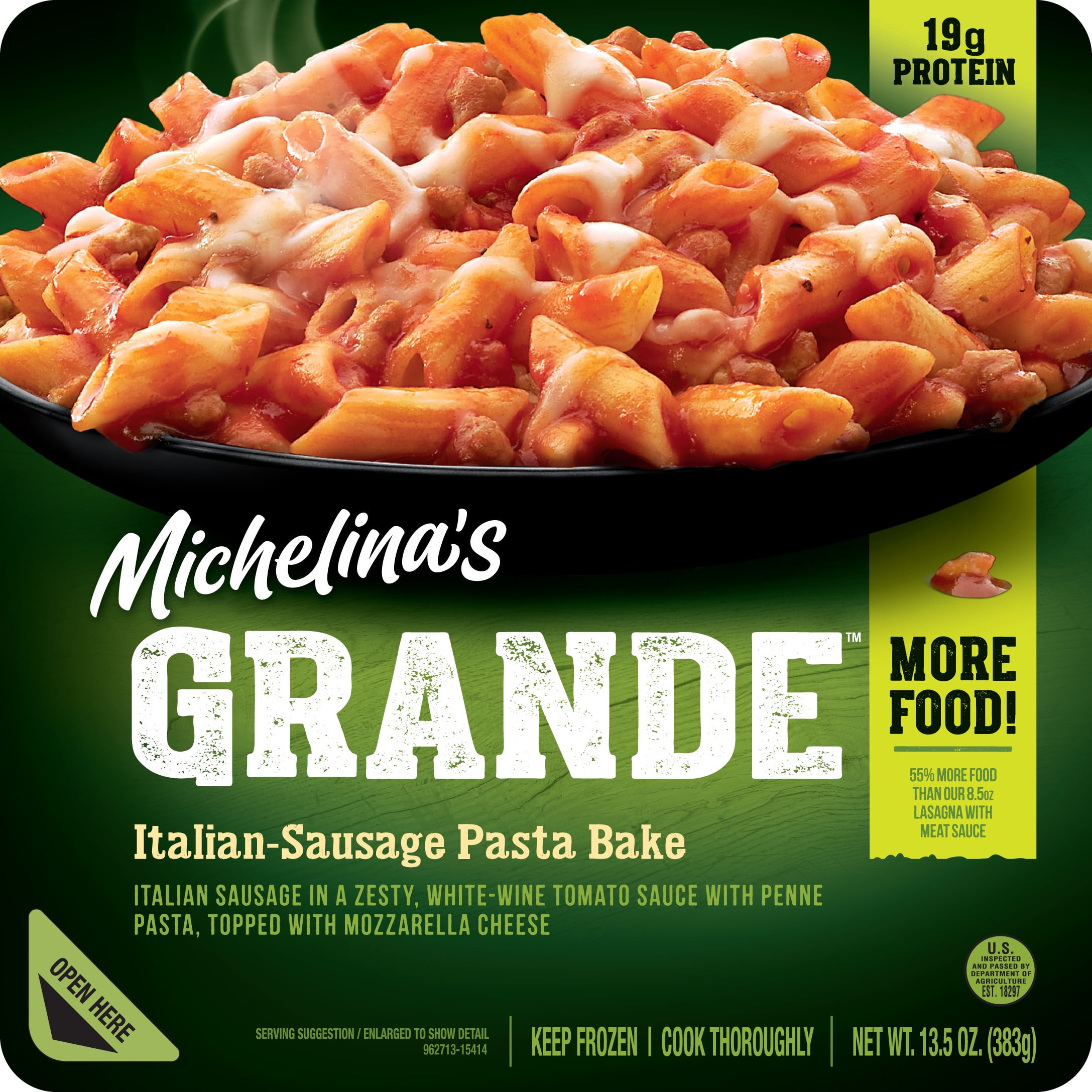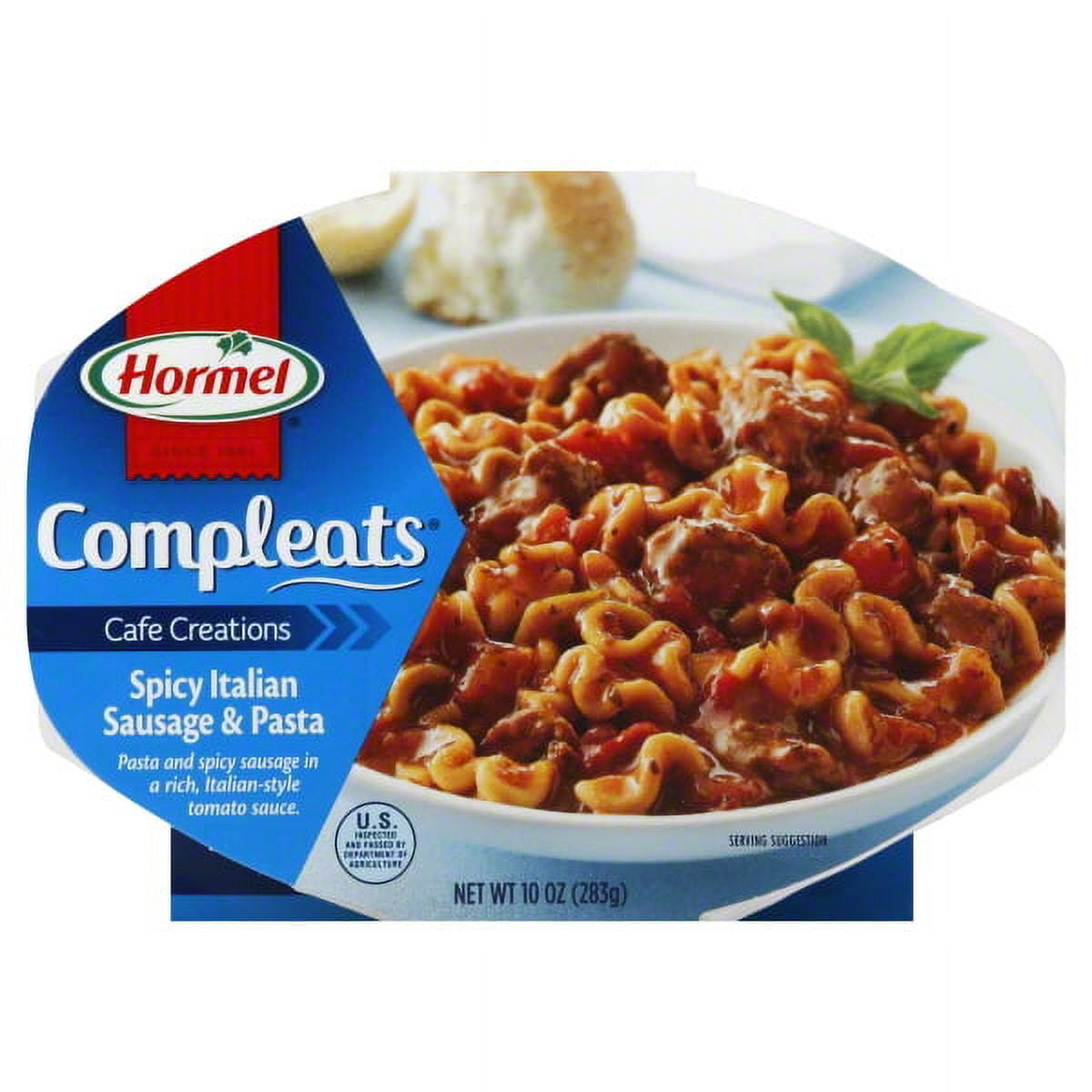Sausage Pasta
Sausage Pasta is a delectable and hearty dish that packs a wonderful blend of flavours. Featuring pasta - most often penne or rigatoni - mixed with sausages, it's a delightful, easy-to-make dinner option. The beauty of this dish is the perfect balance of the richness of the sausages with the texture of pasta, along with additional savoury ingredients such as garlic, tomatoes, and herbs.
Not only is it fulfilling as a standalone main course, Sausage Pasta also serves as a great side dish. It's ideal for those nights when you want a dinner that is both robust and comforting. The versatility of ingredients allows customization for health-conscious individuals with whole grain pasta options, turkey, or chicken sausages.
61%
CARBS
17%
FAT
21%
PROTEIN
Featured Articles
32 Sausage Pasta Products
Giovanni Rana Sausage Mushroom Fettuccine Signature Meal Kit
Healthy Choice Simply Steamers Pasta With Chicken Bolognese, Frozen Meal
Kirkland Signature Italian Sausage & Pasta in Wine Sauce
Great Value Italian Sausage and Pasta
Italian sausage for pasta dish
Giovanni Rana Italian Sausage & Peppers Fettuccine
Home Chef Oven-Ready Italian Sausage Penne With Sun-Dried Tomato Cream And Sweet Corn
Rao's Spicy Italian Sausage & Penne Arrabbiata
Michelina's Grande Italian Sausage Pasta Bake Meal
Hormel Foods Hormel Compleats Cafe Creations Spicy Italian Sausage & Pasta
29 Recipes for Sausage Pasta
5
One-Pan Rustic Italian Sausage Pasta
2
Skillet Sausage, Peppers, and Fusilli Pasta
5
Roasted Cherry Tomato and Chicken Sausage Pasta
4
Savory Sausage Pasta with Delicate White Wine Sauce
1
Spicy Andouille Sausage Pasta in Creamy Cajun Sauce
2
Roasted Chicken Sausage Pasta with Burst Cherry Tomatoes
3
Creamy Cajun Chicken and Sausage Pasta
4
Creamy One-Pot Sausage and Peppers Pasta
Sausage Pasta FAQ
What kind of sausage should I use for sausage pasta?
Do I need to cook the sausage before adding it to the pasta?
What type of pasta is best for sausage pasta?
Can I use a different type of meat instead of sausage?
How do I prevent the pasta from sticking together?
Can I add vegetables to the sausage pasta?
Can I make sausage pasta ahead of time?
What can I do if the pasta is too dry?
Expiration & Storage Tips
When does Sausage Pasta expire?
If unopened and stored in a pantry, a dry sausage pasta can last up to 1-2 years past the printed date on the package. If already prepared and refrigerated, homemade sausage pasta will generally stay at best quality for about 3 to 5 days. If frozen, it can keep its quality for about 1-2 months.
How do you tell if Sausage Pasta is bad?
Look out for a change in color – if it becomes darker, check for a weird smell. Fresh pasta has a mild, earthy smell. If it gets a sour, musty, or fishy odor, it has probably gone bad. If you see mold or any other type of growth on the pasta, it has spoiled and should be disposed. Remember, general rule of thumb, if you're in doubt, it's safer to discard it.
Tips for storing Sausage Pasta to extend shelf life
• Always store pasta in a cool, dry place like your pantry or kitchen cabinet.
• For prepared and cooked pasta, always keep it in covered airtight containers or tightly sealed plastic bags.
• When storing cooked pasta, allow it to cool completely at room temperature before putting in the refrigerator. This prevents condensation that can make the pasta soggy.
• If freezing, try storing pasta in individual portions so you only defrost what you need. When defrosting, it's safer to thaw in the fridge rather than room temperature to avoid bacterial growth.
• Consider adding a touch of oil to your cooked pasta before storing to prevent it from clumping together.
Health Info
Macros
46g
CARBS
15g
FAT
16g
PROTEIN
Contains these allergens
WHEAT
MILK
